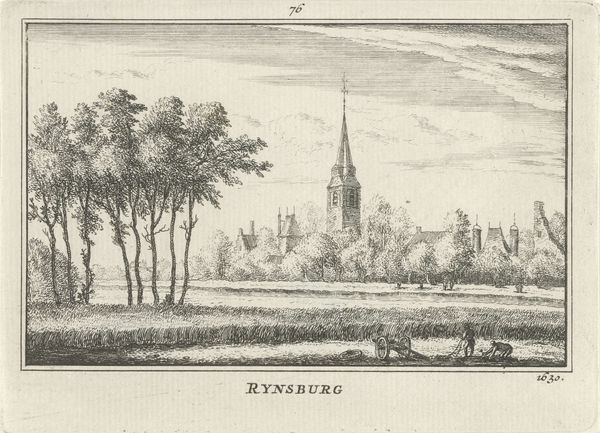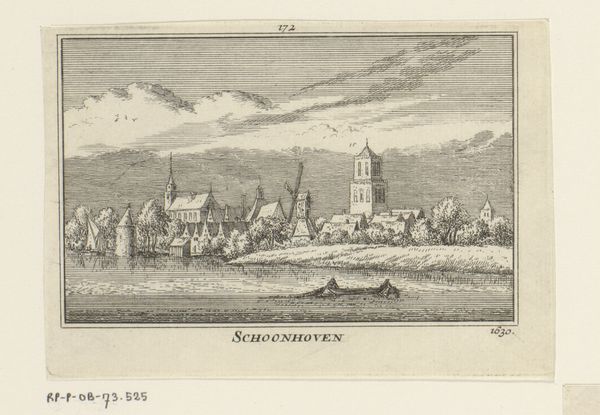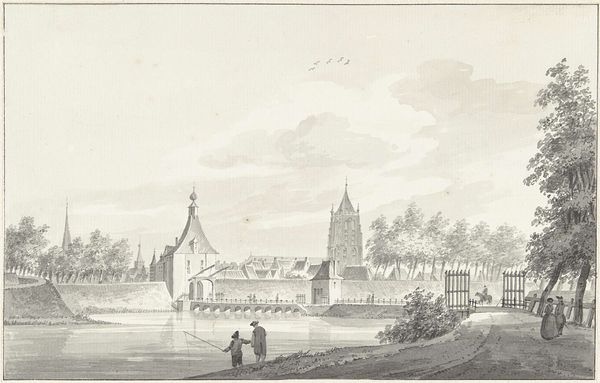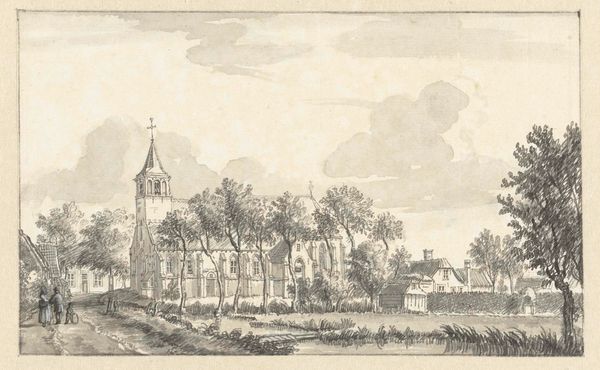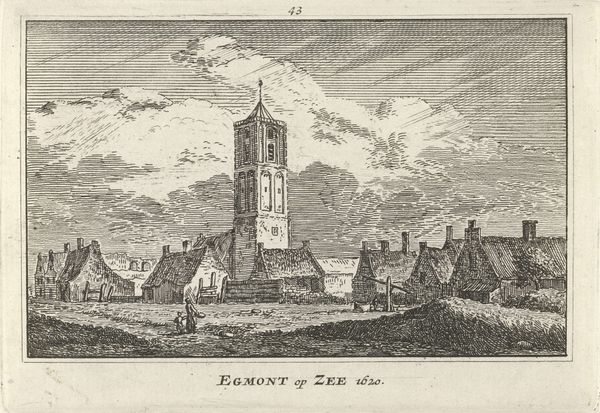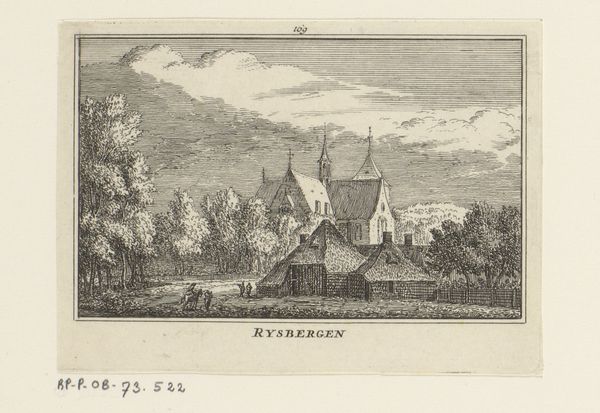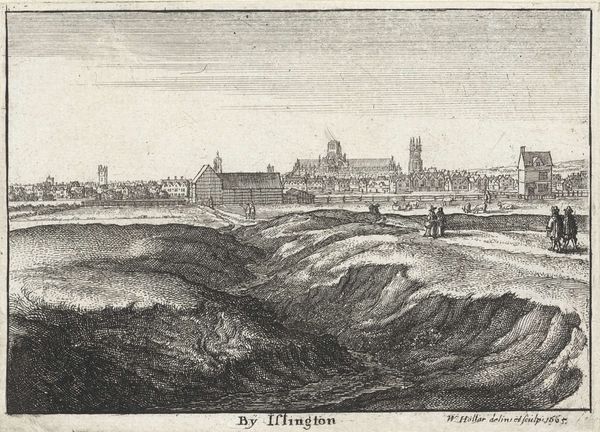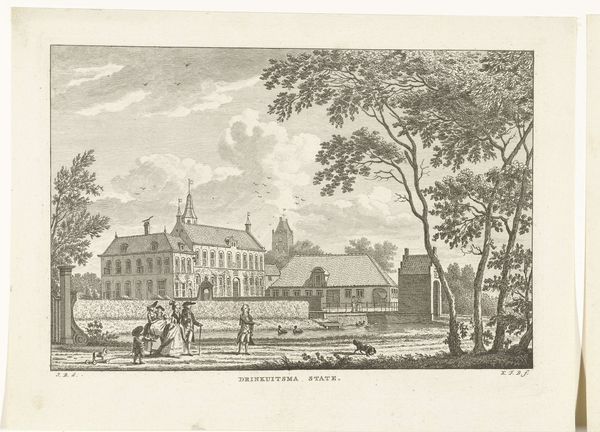
print, etching
#
baroque
# print
#
etching
#
landscape
Dimensions: height 80 mm, width 115 mm
Copyright: Rijks Museum: Open Domain
Editor: So this is “Gezicht op Rijnsburg, 1600” by Abraham Rademaker, created sometime between 1727 and 1733. It's an etching, a landscape print. What strikes me is how the tall church spire dominates the scene, even from a distance. What do you see in it? Curator: I see a carefully constructed image, one that draws heavily on the symbolic language of Dutch landscape painting. Notice how the church isn't merely a building; it's a visual anchor, a symbol of stability and faith amidst a changing world. The landscape itself is imbued with a sense of order, reflecting a specific cultural ideal. Consider the horizon, the way the light filters through the clouds… Editor: Yes, there’s almost a staged quality to the lighting. It seems very deliberate. Curator: Precisely! Rademaker is not simply recording a place; he's carefully crafting a message. Think about the figures in the foreground – they represent the common people, their relationship to the land, to their community, and how that ties into collective memory. What emotional feeling do you get from observing them? Editor: I suppose a sense of calm. A feeling of everyday life just continuing along in harmony with this bigger…structure, both physical and societal. Curator: That sense of harmony is key. The image presents a particular vision of Dutch society. But look closer. Do you notice any symbols of tension? Any disruptions to this ideal? Editor: I see ruins just behind the church? I wonder if this has to do with Dutch iconoclasm in the early 17th century, when many church interiors were stripped? Curator: Interesting point. The ruins suggest even something like that can fade from collective memory to become romanticized... perhaps it is another testament to society adapting, not just surviving. This is where understanding the historical context is vital to unpack the complex layers of visual symbols within the print. It allows us to truly see its richness. Editor: I hadn't thought of landscape as such a loaded symbol. Thanks! Curator: My pleasure! Every stroke tells a story when you look for it.
Comments
No comments
Be the first to comment and join the conversation on the ultimate creative platform.
